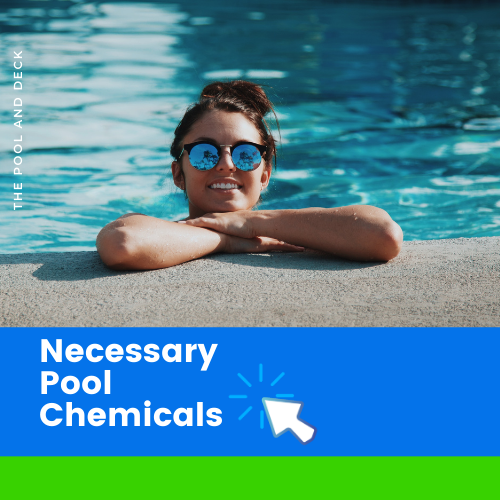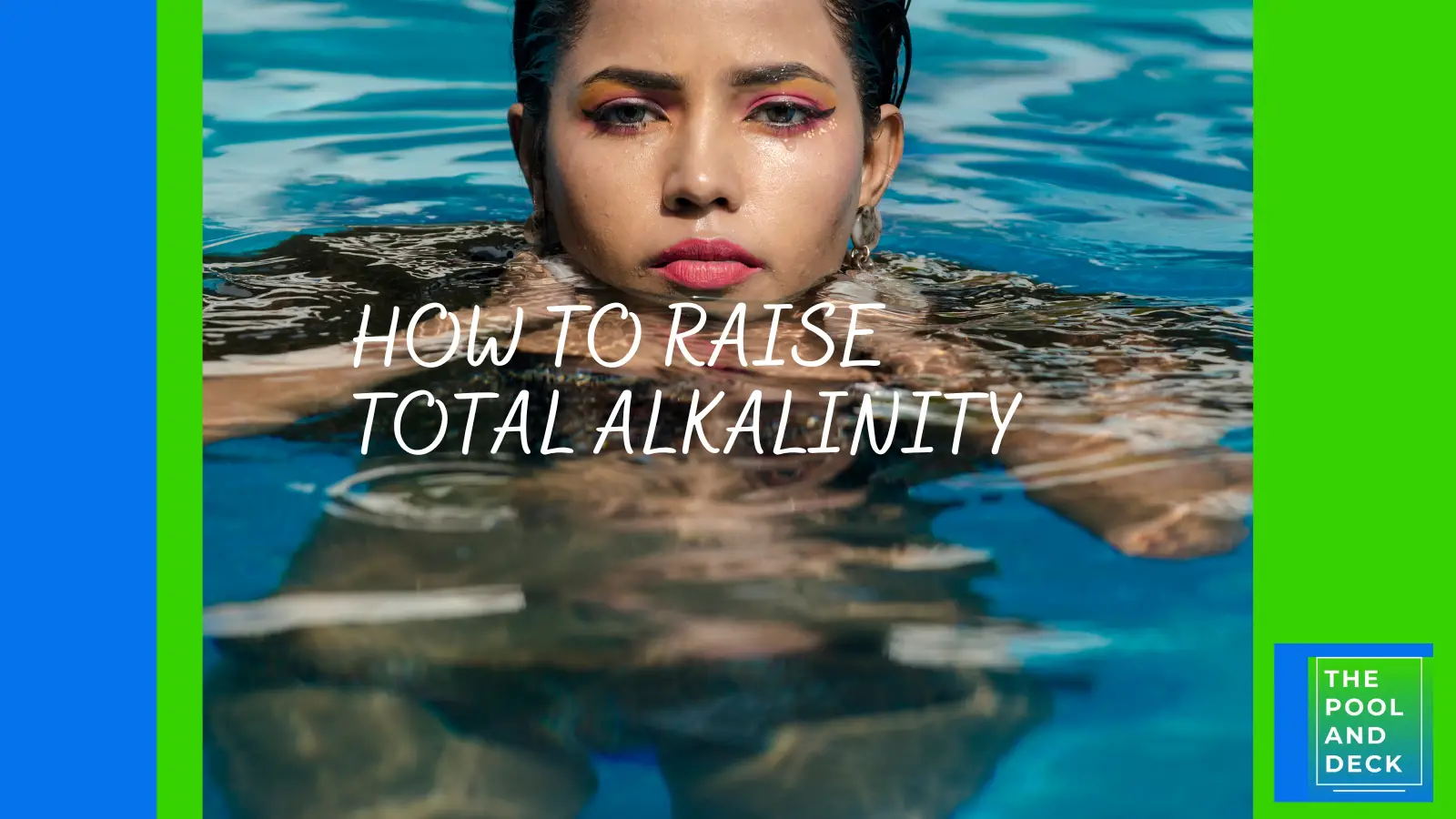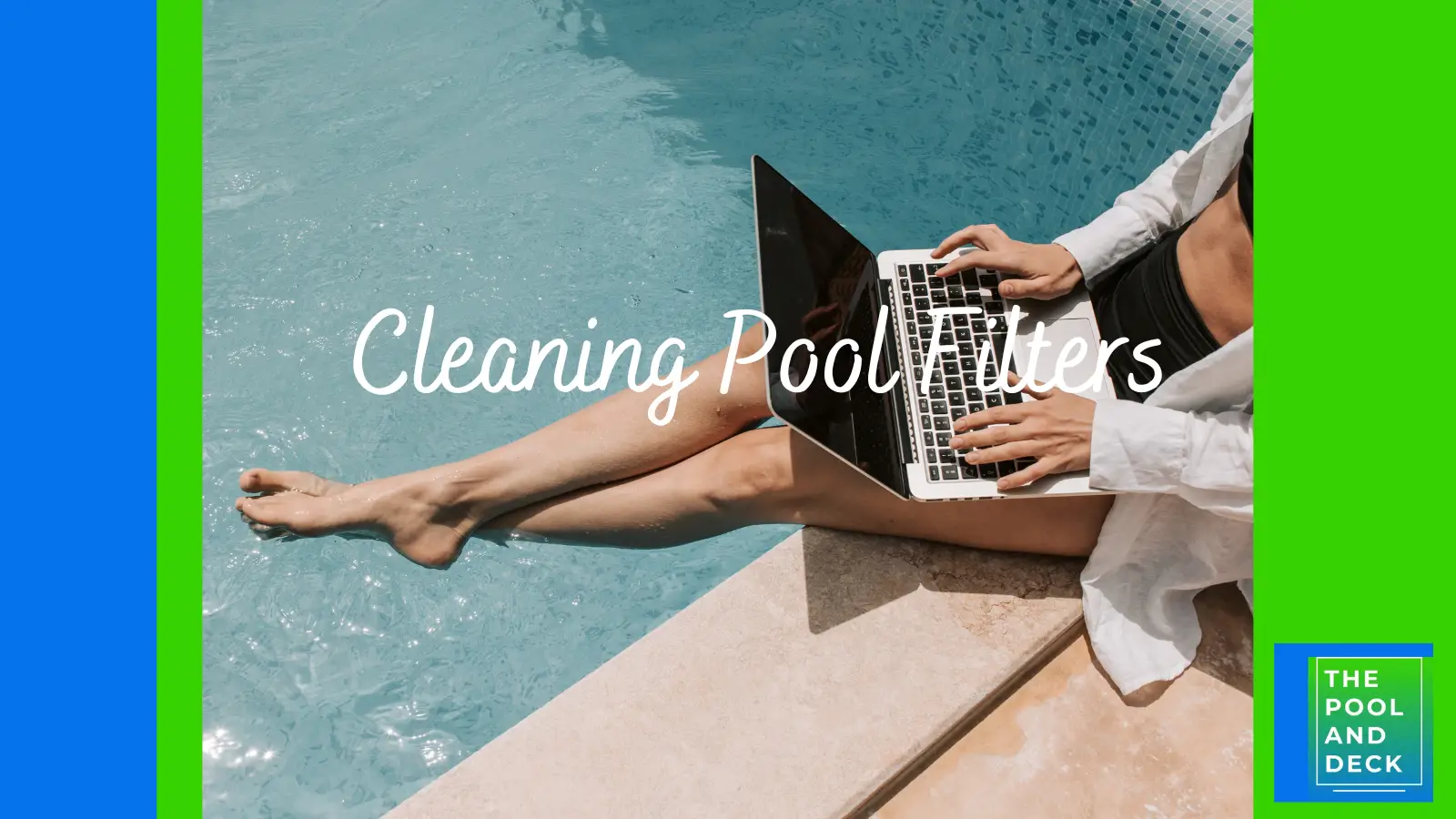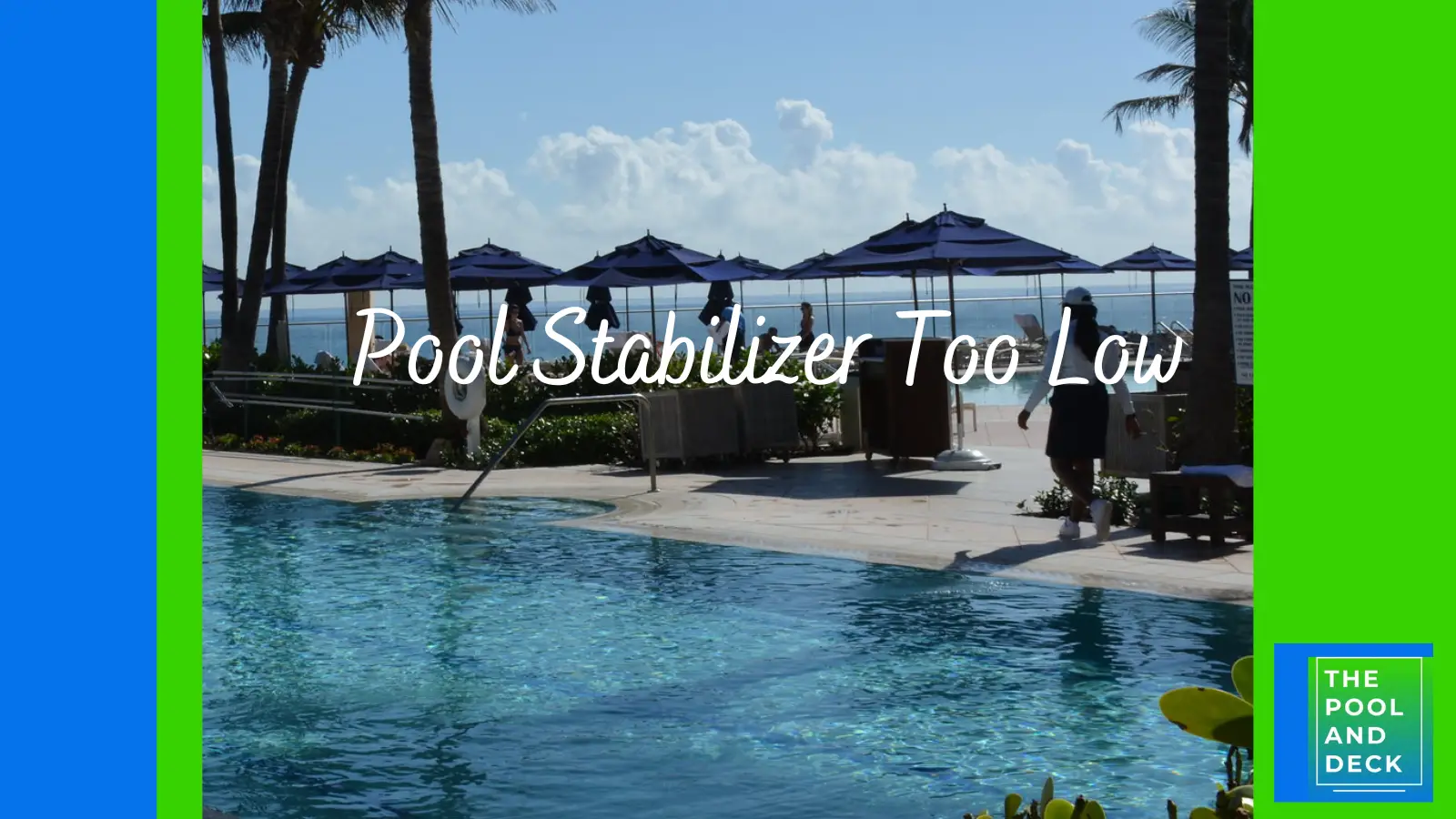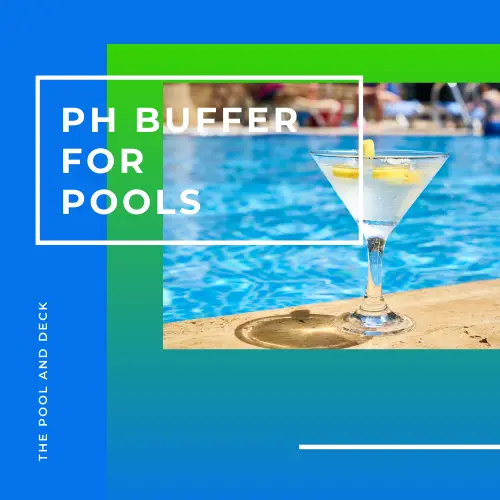Chlorine Lock in Pool: What is the Best Way to Unlock?
Table of Contents
What is Chlorine Lock in a Pool?
To understand chlorine lock in pool you have to understand this simple formula
Total Chlorine (TC) = Free Chlorine (FC) + Combined Chlorine (CC)
Chlorine is most effective when Total Chlorine (TC) is equal to Free Chlorine (FC) and Combined Chlorine (CC) is zero or at least as close to zero as possible. Combined Chlorine (CC) of 0.5 ppm is considered good.
When you add chlorine to your pool, it reacts with water to form Hypochlorous (HOCl) acid which exists in the pool water along with the Hypochlorite (OCl)- ion
Together HOCL and OCL- are referred to as Free Chlorine (FC). Free Chlorine (FC) sanitizes the pool by combining with the contaminants and forming chloramines. This is Combined Chlorine (CC). It no longer has the ability to sanitize or disinfect.
Chlorine lock in pool refers to a condition where chlorine becomes ineffective at sanitizing the pool. Combined chlorine levels rise and there is a decrease in the amount of free chlorine available to sanitize the water. The total chlorine may still be reasonably high but most of it is ineffective.
In essence chlorine has been locked out of action.
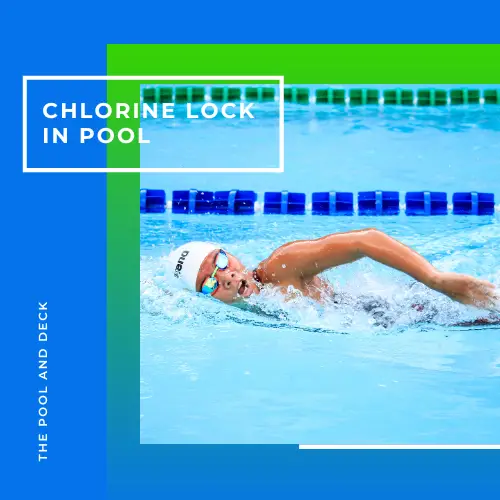
Chlorine lock in pool will announce its presence by the strong chlorine smell. The smell is in fact the smell of chloramine, not chlorine. In some cases, swimmers may experience skin irritation or red, itchy eyes.
The next thing you may notice, if you have a chlorine lock in pool, is that the pool water starts to turn cloudy. If left untreated, it can lead to an abnormal growth in pathogens and algae.
Chlorine lock in pool needs to be fixed as soon as possible, else your pool may become unsafe for swimming.
A chlorine lock in your pool will result in a decrease in chlorine levels despite adding more chlorine.
To address chlorine lock in pool, you should use a reliable test kit to check the pool’s chlorine levels. Do chlorine levels continue to be low despite adding more chlorine?
If the test indicates a low free chlorine level and a high combined chlorine level, then chlorine lock in pool may be the problem.
The most effective method to break the chlorine lock is to “shock” the pool. A very large dose of chlorine is added to the pool to break up the molecular bonds that are causing the chlorine lock in pool.
thepoolanddeck.com is a participant in the Amazon Services LLC Associates Program, an affiliate advertising program designed to provide a means for sites to earn advertising fees by advertising and linking to Amazon.com . The website is also an affiliate of a few other brands. The affiliate links never increase your purchase price. We do appreciate your support. Thank you very much!
Click on the image below to reach the page with all the Necessary Pool Chemicals.
What is Chlorine Demand?
The terms “chlorine lock” and “chlorine demand” are often used together. The reason is that high chlorine demand can often result in chlorine lock in pool.
Chlorine demand is the amount of chlorine required to sanitize the pool water effectively. Chlorine demand can shoot up in summer as more people use the pool and for longer hours. Body fluids, such as sweat and urine, increase the chlorine demand.
Climatic conditions such as heavy rain or wind storms can dump additional organic matter such as leaves, insects, etc into your pool. The chlorine demand goes up as it needs to neutralize the additional biomass.
In addition, the chlorine demand can also increase due to:
- High pH Levels: High pH levels can cause chlorine to become less effective at sanitizing the pool water. This can result in high chlorine demand, as more chlorine is required to maintain the desired level of sanitation.
- High Levels of stabilizer: Stabilizer (Cyanuric Acid) is added to pool water to protect chlorine from being degraded by sunlight. However, high levels of stabilizer can cause chlorine to become less effective, leading to high chlorine demand.
- Increased Sunlight: An increase in sunlight will cause chlorine to degrade more quickly, leading to high chlorine demand.
High chlorine demand will result in an abnormal decline in free chlorine and increase in chloramines. This can lead to a chlorine lock in pool.
Chlorine demand can be measured by adding a known amount of chlorine to the pool water and measuring the resulting chlorine level. If the increase in chlorine is less than expected, then it is because of high chlorine demand.
To address high chlorine demand, pool owners should shock the pool with a higher dose of chlorine to break up the molecular bonds that are causing the chlorine demand.
They should also remove any organic matter from the pool water, adjust pH and alkalinity levels, and reduce stabilizer levels. Proper pool maintenance and cleaning practices can also help prevent high chlorine demand.
How to Fix Chlorine Lock in Pool and Manage Chlorine Demand ?
If you are struggling with chlorine lock in pool you will need to resort to both corrective and preventive measures. In other words, unlock the chlorine lock and take steps to keep the chlorine demand in control.
Corrective Action
The most effective corrective action is to shock your pool. Shock treatment involves adding a high dose of chlorine to the pool water to break up the molecular bonds that are causing the chlorine demand.
The amount of chlorine needed for shock treatment depends on the size of the pool, the amount of organic matter present, and the severity of the chlorine demand.
If the cyanuric acid levels in your pool are high, do not use a dichlor shock as it will further increase the CYA level. In most cases a Cal Hypo shock is the best bet.
I recommend using HTH Ultra Pool Shock – Calcium Hypochlorite (Cal-Hypo).
Similarly if the calcium hardness levels are high, do not use Cal Hypo shock. Liquid chlorine shock is a safe bet as it has several advantages.
Preventive Measures
Following actions will help control the chlorine demand of your pool.
- Filtration: Proper filtration can help remove contaminants from the pool water, reducing the overall demand for chlorine. It’s essential to clean and maintain the pool filter regularly to ensure it is functioning correctly.
- Brushing & Vacuuming: Brushing and vacuuming the pool can help remove a lot of the organic matter that may be contributing to the chlorine demand.
- pH adjustment: High pH levels can make chlorine less effective at sanitizing the pool water, leading to higher chlorine demand. Lowering the pH level to the recommended range of 7.2 to 7.6 will improve chlorine effectiveness.
- Stabilizer Adjustment: Stabilizer is added to pool water to protect chlorine from being degraded by sunlight. However, high levels of stabilizer can cause chlorine to become less effective, leading to higher chlorine demand. Maintaining the cyanuric acid (CYA) level between 30 to 50 ppm will prevent chlorine lock in pool.
- Glass Pool Fencing: Not only does it add class and safety to your backyard pool it also prevents yard debris from getting blown into the pool. You will also, hopefully, not find crawlies sharing your pool with you. An unrelated benefit of glass pool fencing is that it reduces wind over the pool and reduces pool water loss due to evaporation, as a result.
- Standard Pool Etiquette: An obvious, yet often ignored, measure is enforcing basic pool rules.
- Shower before Swimming
- Wash Swimwear after every Session
- No Peeing in the Pool
For more information check out my Pool Chemistry for Beginners: With 5 Super Helpful Cheat Sheets!
Thank you very much for reading the post. I do hope you found it informative and helpful.

